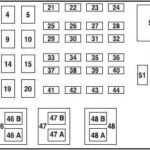The OBD-II (On-Board Diagnostics) connector is a crucial component in modern Toyota vehicles, providing access to a wealth of diagnostic information. Understanding the Toyota Obd Connector Pinout is essential for troubleshooting issues, monitoring performance, and customizing your vehicle. This guide delves into the specifics of the Toyota OBD-II connector, providing a detailed pinout diagram and compatibility information.
Decoding the Toyota OBD-II Connector Pinout
The OBD-II connector in Toyota vehicles, like most modern cars, is a standardized 16-pin female connector typically located under the dashboard on the driver’s side. Each pin serves a specific purpose, transmitting data or providing power for diagnostic tools. Here’s a breakdown of the Toyota OBD connector pinout:
| Pin | Signal | Description |
|---|---|---|
| 2 | J1850 Bus+ | Used in earlier Toyota models for communication. |
| 4 | CGND | Chassis ground, provides a common ground for the system. |
| 5 | SGND | Signal ground, used for referencing voltage signals. |
| 6 | CAN High (CAN H) | Part of the Controller Area Network (CAN) bus, a high-speed communication system. |
| 7 | ISO 9141-2 K-Line | Primarily used in earlier models for diagnostic communication. May also connect to Occupant Detection, Transponder Key, Telephone, and Tire Pressure Warning systems. |
| 9 | TAC | Potentially used for tachometer signal from the Engine Control Module (ECM). |
| 10 | J1850 Bus- | Used in earlier Toyota models for communication. |
| 12 | TS | Connected to the Brake Actuator Assembly for diagnostic purposes. |
| 13 | TC | Used for timing check, ignition advance angle adjustment, or retrieving ABS slow codes. |
| 14 | CAN Low (CAN L) | Part of the Controller Area Network (CAN) bus, a high-speed communication system. |
| 15 | L-Line | Used in earlier models for communication, conforming to ISO 9141-2 and ISO/DIS 14230-4 standards. |
| 16 | +12V | Provides battery power to the diagnostic tool. |
Note: Pins not listed in the table are not connected.
Toyota OBD-II Protocol Compatibility
Toyota, like other manufacturers, has transitioned through different OBD-II communication protocols over the years. Knowing the specific protocol used by your Toyota model is crucial for selecting the right diagnostic tool. While a comprehensive list is challenging to maintain, here’s a general overview:
- Early Models (Pre-2000s): Often utilized J1850-VPW or ISO 9141-2 protocols.
- Mid-2000s: Primarily used ISO 9141-2 or transitioned to CAN.
- Late-2000s and Beyond: Predominantly use the CAN protocol, specifically CAN 11bit (500kb) in many cases.
Consulting your vehicle’s owner’s manual is recommended for confirming the specific OBD-II protocol.
Conclusion
Understanding the Toyota OBD connector pinout empowers you to perform diagnostics, monitor vehicle health, and potentially customize your Toyota. While this guide provides a comprehensive overview, always refer to your vehicle’s specific documentation for the most accurate information. Utilizing the correct diagnostic tools and procedures ensures accurate readings and safe operation.


